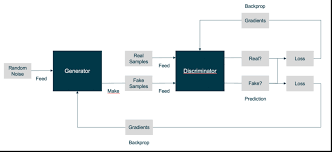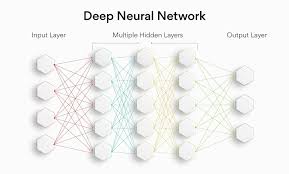The Art and Science of Arabic Language Translation
Arabic is one of the world’s most widely spoken languages, with over 300 million native speakers across more than 20 countries. As a language rich in history and cultural significance, translating Arabic presents unique challenges and opportunities for linguists and translators alike.
The Complexity of Arabic
Arabic is known for its complex grammar, extensive vocabulary, and unique script. It is a Semitic language, which means it shares roots with Hebrew and Amharic. The language’s structure includes root patterns that can create numerous derivations, making it both versatile and challenging to translate accurately.
Additionally, Arabic script is written from right to left, which requires special attention when formatting translated texts. The script itself consists of 28 letters that change shape depending on their position in a word, adding another layer of complexity to the translation process.
Dialects and Variations
One of the major challenges in Arabic translation is the presence of numerous dialects across different regions. While Modern Standard Arabic (MSA) is used in formal writing and media, everyday communication often occurs in regional dialects such as Egyptian Arabic, Levantine Arabic, or Gulf Arabic.
This diversity requires translators to have not only a deep understanding of MSA but also familiarity with various dialects to ensure accurate translations that resonate with local audiences.
The Role of Technology
Advancements in technology have significantly impacted the field of translation. Machine translation tools powered by artificial intelligence are increasingly capable of handling basic translations between English and Arabic. However, these tools often struggle with nuances such as idiomatic expressions or cultural references that require human expertise.
Professional translators use technology as an aid rather than a replacement for human insight. By combining AI tools with their linguistic skills, they can achieve higher accuracy rates while maintaining the subtleties inherent in the source material.
Cultural Sensitivity
Cultural sensitivity plays a crucial role in effective translation. Translators must be aware of cultural contexts to avoid misinterpretations or offense when converting texts from one language to another. This includes understanding religious references, historical events, social norms, and values specific to Arab cultures.
The Future of Arabic Translation
As globalization continues to connect people worldwide, demand for high-quality Arabic translations will likely increase across various industries such as business, education, tourism, and entertainment.
The future holds exciting possibilities for further integrating AI advancements into professional translation services while emphasizing cultural competence among translators themselves—ensuring that communication remains clear yet respectful across linguistic divides.
In conclusion: mastering the art—and science—of translating this beautiful yet complex language requires dedication from skilled professionals who appreciate both its intricacies & cultural depth; ultimately fostering greater understanding among diverse communities around globe!
7 Essential Tips for Accurate Arabic Language Translation
- Understand the cultural context to ensure accurate translations.
- Be mindful of the nuances and subtleties in Arabic language.
- Consider regional dialects and variations when translating.
- Use professional translators who are native Arabic speakers.
- Pay attention to gender-specific language in Arabic translations.
- Verify the accuracy of translated text with a second review or proofreading.
- Utilize online resources and tools for assistance, but always verify translations for accuracy.
Understand the cultural context to ensure accurate translations.
To ensure accurate translations in Arabic language, it is crucial to understand the cultural context surrounding the text. Cultural nuances, customs, and references play a significant role in conveying the intended meaning effectively. By delving into the cultural background of the source material, translators can capture the essence of the message and convey it appropriately in Arabic, fostering better communication and connection with the target audience.
Be mindful of the nuances and subtleties in Arabic language.
When engaging in Arabic language translation, it is crucial to be mindful of the nuances and subtleties inherent in the language. Arabic is rich in cultural nuances, idiomatic expressions, and historical references that can significantly impact the meaning of a text. Translators must pay close attention to these intricacies to ensure accurate and culturally sensitive translations that resonate with native speakers. By understanding and respecting the subtleties of Arabic, translators can effectively convey the intended message while maintaining the authenticity and essence of the original text.
Consider regional dialects and variations when translating.
When translating Arabic language content, it is essential to consider regional dialects and variations. Arabic encompasses a wide range of dialects across different regions, each with its unique vocabulary, grammar, and expressions. Understanding these variations is crucial to ensure that the translated text resonates authentically with the target audience. By taking into account regional nuances, translators can deliver accurate and culturally sensitive translations that effectively communicate the intended message to diverse Arabic-speaking communities.
Use professional translators who are native Arabic speakers.
To ensure accurate and culturally sensitive Arabic language translation, it is highly recommended to utilize the expertise of professional translators who are native Arabic speakers. Native speakers possess an inherent understanding of the language’s nuances, dialects, and cultural context, enabling them to deliver translations that resonate authentically with the target audience. By entrusting your translation needs to skilled professionals who have a deep connection to the Arabic language, you can be confident in receiving high-quality and precise translations that effectively convey your message across linguistic boundaries.
Pay attention to gender-specific language in Arabic translations.
When translating Arabic text, it is crucial to pay close attention to gender-specific language. Arabic, like many languages, distinguishes between masculine and feminine forms in its grammar and vocabulary. Failure to accurately convey gender specificity in translations can lead to misunderstandings or misrepresentations of the original text’s meaning. Translators must carefully consider context and cultural nuances to ensure that gender distinctions are preserved and appropriately reflected in the target language.
Verify the accuracy of translated text with a second review or proofreading.
To ensure the precision and quality of translated Arabic text, it is highly recommended to verify its accuracy through a second review or proofreading process. This additional step not only helps in catching any potential errors or inconsistencies that may have been overlooked during the initial translation but also ensures that the final output maintains linguistic integrity and cultural nuances. By incorporating a second set of eyes to assess the translated content, translators can enhance the overall quality and reliability of the text, ultimately delivering a more polished and professional end product to the intended audience.
Utilize online resources and tools for assistance, but always verify translations for accuracy.
When delving into Arabic language translation, it is beneficial to leverage online resources and tools to aid in the process. These tools can provide valuable assistance in translating text efficiently and quickly. However, it is crucial to exercise caution and always verify translations for accuracy. Automated translation tools may not always capture the nuances, context, or cultural sensitivities inherent in Arabic language. By cross-referencing translations with human expertise or professional services, one can ensure that the final output is precise and conveys the intended meaning effectively.


